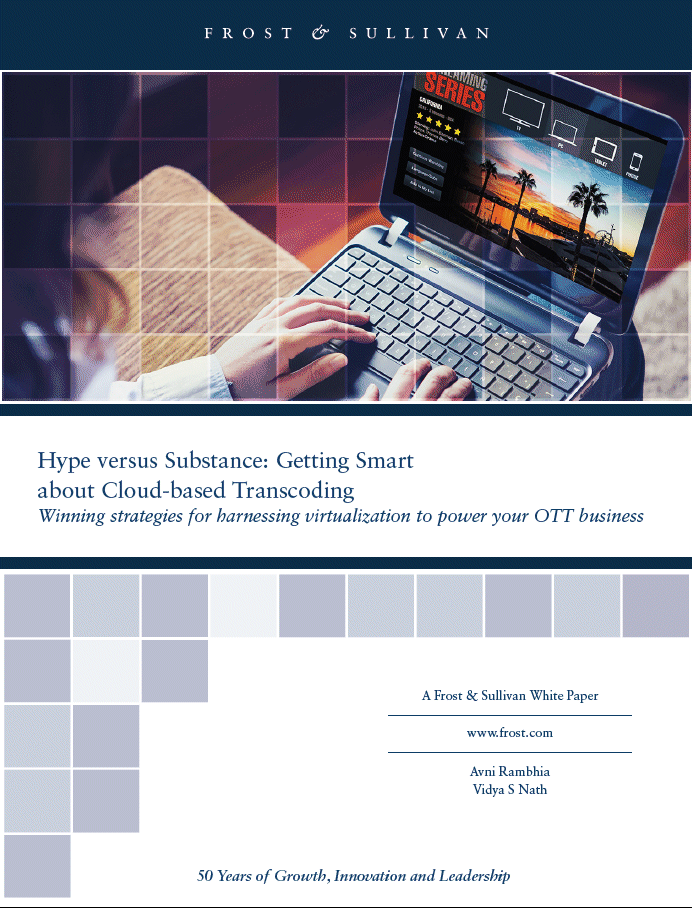Pay TV service operators and broadcasters fully understand that OTT and TVE are the keys to continued user engagement and service/revenue growth. Frost & Sullivan forecasts that SVOD subscriptions will double from more than 500 million accounts in 2015 to over 1 billion by 2021. Per-capita online video consumption is growing steadily worldwide by every metric.
The implication of these surging numbers is that the volume of content that will be brought online—across movies, on-demand television, catch-up TV, live linear broadcasts and special events—will correspondingly skyrocket.
Growth in video processing volume to serve device-based consumption will far outpace managed workflow growth. Accordingly, all content companies will need to expand their transcoding and streaming workflow capacity to manage more fragmented and complex formats, encompass a wider range of technologies, and accommodate rapidly growing volume while lowering turnaround times to support instant gratification expectations.
So how do content companies balance out the scalability challenges of compression needs for the modern day hybrid video distribution universe? Media companies CIOs are still weighing the benefits of cloud based transcoding versus on-premise solutions trying to answer questions on throughput and quality, SaaS for broadcast workflows, differentiation of various solutions, and the impact on their bottom lines.
A case study of an Austrian VOD service provides key insights on how a prime TV broadcaster relaunched its on-demand service by transforming its workflows based on cloud-based transcoding from European technology vendor, Bitmovin. The media company wanted to transition to HTTP-based streaming using HLS and MPEG-DASH for an expansive library comprising thousands of titles.
As multimedia video distribution for TV and OTT becomes a much bigger reality, media companies need to evaluate the right solutions that can address their needs for transcoding and encoding suitable for today’s media environments. Frost & Sullivan outlines each of the myths around cloud based transcoding, as well as provides a vital checklist to consider while making that decision.




